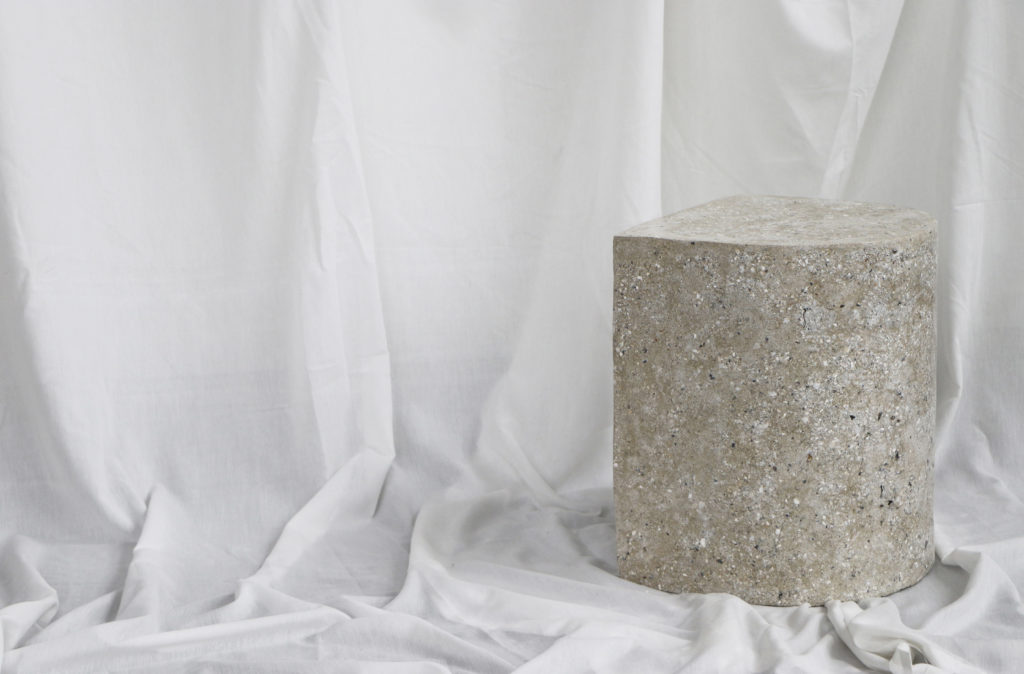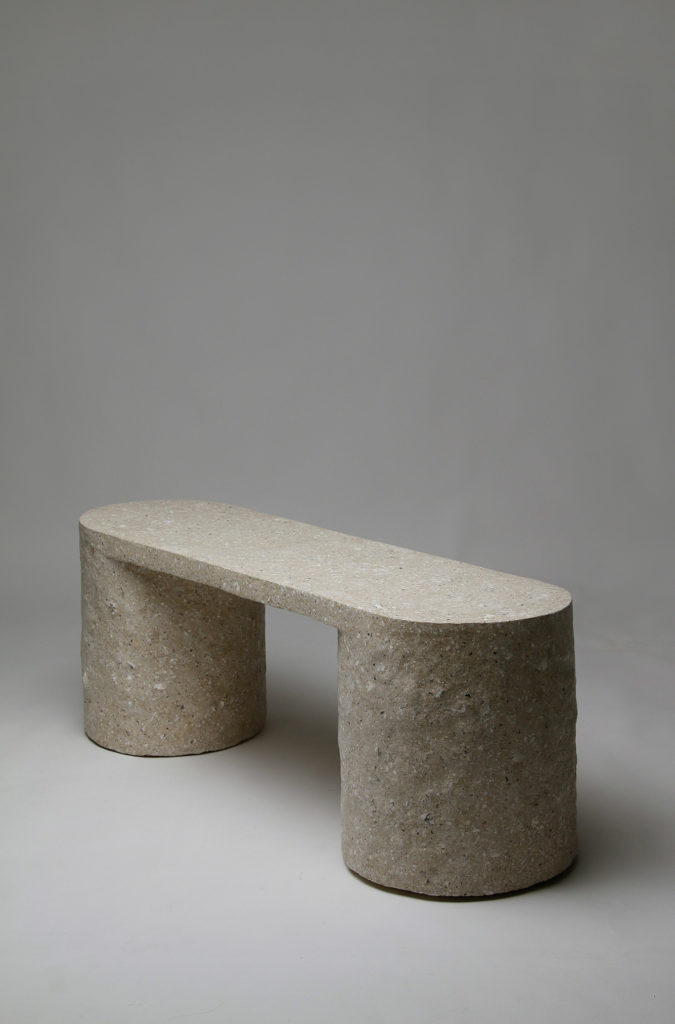Carolina Härdh first began to ponder the value of an oyster in 2017. After watching piles of beautiful oyster shells from her native Sweden tossed into garbage bins at restaurants, she wondered if the shells could be put to better use. Since then, she’s made it her mission to find a solution to the food-waste problem through her use of unconventional materials in her furniture design.
“The human culture of ‘waste’ in general has always been very interesting for me,” said Härdh. “Why do we choose to see certain things as ‘waste,’ and where does that border go?”

Her designs, created in partnership with Vrå, a Japanese-inspired restaurant in Gothenburg, Sweden, include a stool and side table hybrid, “Gigas.” The cement-like material is formulated from crushed oyster shells from the Swedish coast, seaweed, fish glue—an adhesive derived from fish bones—and rice starch, making the pieces biodegradable and reusable. Any leftover materials are made into chopstick holders and tip trays to be used at the restaurant. The crushed oyster shells create a beautiful terrazzo effect and the textures of each piece serve as a reminder of the raw materials utilized.
“I wanted to keep the form quite clean and not steal attention from the material itself,” said Härdh, who makes each piece by hand.

The creation of materials strong enough to function as furniture did not come without several trials and errors. Härdh’s initial approach resulted in a structure similar to a biscuit, prone to crumbling. But when Härdh met friend and fellow designer Emeli Höcks in grad school, the two brainstormed how they could bring to life their dream of food-sourced furniture. Höcks had previously worked as a chef and had some experience with reimagining a new life for discarded food. In 2020, they exhibited their bench design, “Besitt,” made with biodegradable material. This served as a jumping-off point for Härdh’s commitment to this cause.
Food waste is an issue rapidly getting out of hand—in Canada, more than half of all food produced each year is wasted, according to a report by the non-profit organization Second Harvest. This in turn can lead to a rise in methane emissions, contributing to climate change. The anxiety of this knowledge is what led Härdh to find a way to create a sustainable solution that works with and for the natural world.
“If we want to live on planet Earth as human beings in the future, we need to design with nature.”

“As a designer, I need to think in long terms and take responsibility for my decisions [by choosing non-toxic ingredients]—whatever I create, it will live on even longer than I will,” said Härdh. “If we want to live on planet Earth as human beings in the future, we need to design with nature.”
Could this be a solution to the global food-waste problem? Potentially— but Härdh stresses the need to rethink our constant desire to consume. She hopes this can serve as an example of only taking from nature what is needed.
“The most important thing is to never pick more oysters from the ocean [than are needed], so that it could threaten the species,” said Härdh. “Furthermore, never produce more furniture than we need and have a purpose for.”

